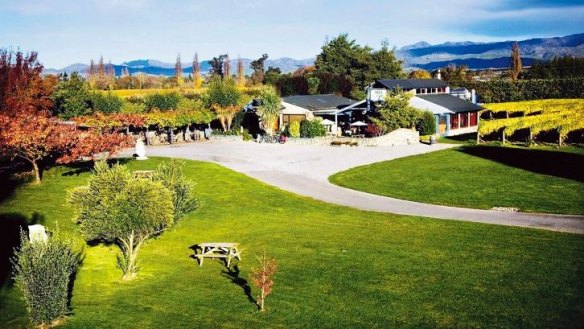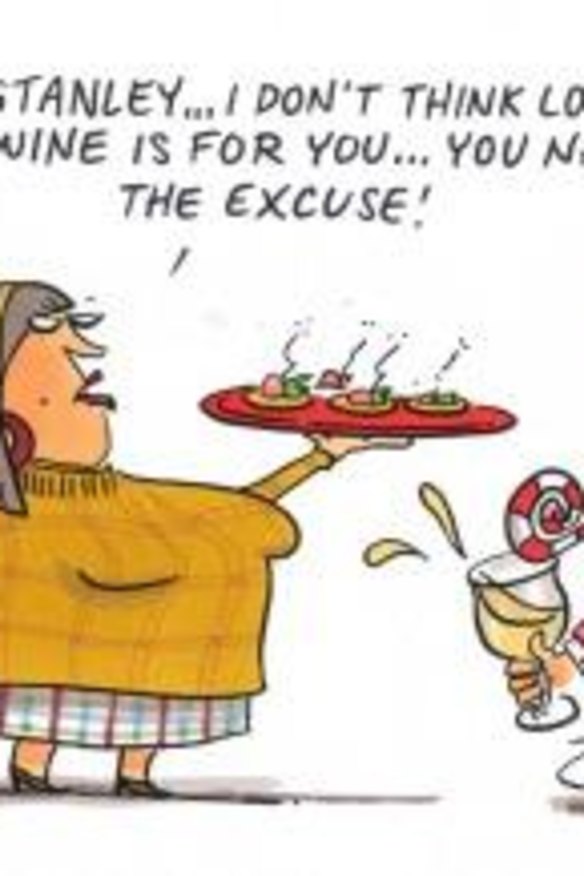Low-alcohol wine on its way

John Forrest is excited: he's like a code-breaker who's cracked the cipher.
His breakthrough isn't about top-secret military intelligence, it's about making wine in a new way. And far from being secretive, he's telling everyone about it.
Forrest, who has been making wine in New Zealand's Marlborough region for 27 years, has grown determined in recent times to make high-quality, full-flavoured, well-balanced wines with less alcohol than normal. We're talking 9 per cent instead of 13 – a reduction of about one-third.

Forrest is a molecular biologist by training and his wife Brigid is a general practitioner. She's still practising, but he works 100 per cent for their winery, Forrest Wines. Both of them have long been convinced that low-alcohol wines would catch on – if only they could deliver the classic Marlborough sauvignon blanc flavour at 9 per cent alcohol, instead of the more typical 12 to 13.
Alcohol levels of 8 or 9 per cent have been achieved before, by harvesting the grapes earlier than usual, when the sugar levels were lower, but the wines tended to be overly acidic and hard, with green rather than ripe-fruit aromas and flavours. Because of the lack of alcohol weight, they tended to have a hollow middle-palate, and this lack of palate weight was often compensated for with higher levels of residual sugar.
But John Forrest reckons he now has the formula. The wine, marketed under Forrest Wines' second label, The Doctors', is a triumph. The 2014 The Doctors' Sauvignon Blanc has ripe-spectrum fruit flavours, a full palate and balanced acidity, with a perfectly reasonable 6 grams per litre of sweetness (lower than the norm for full-strength Marlborough savvy).
How does he do it?
He's quite happy to give away the secret.
Forrest and his team of winemakers and viticulturists discovered that if they plucked the new leaves from the vines late in the ripening period, and left the old leaves to do all the work of ripening the grapes, the sugar accumulation was slower, while the flavour accumulation continued as normal.
The harvest time is the same as for the grapes for the "normal" Forrest Sauvignon Blanc, and the acidity is similar. But the grapes that result from this leaf-plucking regime simply have less sugar (for the tech heads, 18 degrees Brix instead of 24 for the regular sauvignon), which means the fermented wine has about one-third less alcohol.
How does this happen? Forrest isn't entirely sure, but assumes it has something to do with the old leaves being tired – a little worn-out – and therefore less efficient as "sugar factories".
Forrest makes no secret of his excitement, firstly that The Doctors' low-alcohol sauvignon blanc is selling very well, and secondly that it's turning the jaded heads of senior members of the retailing fraternity. He cites an experience with a highly experienced Melbourne fine-wine retailer who was non-plussed when he heard about the wine, until he tasted it.
This is probably because low-alcohol wines have been underwhelming in the past. We've seen the spinning cone column, reverse osmosis, distillation and vacuum distillation. All have been used during the decades to remove alcohol from normal-strength wine.
The spinning cone is an Aussie invention that uses a centrifuge to remove alcohol from regular wine. The resultant wines tasted thin and hollow – not like "real" wines – so winemakers added grapejuice sweetening to fill the hole in the middle-palate. The result was a wine that lost any dietary advantage it gained from holding less alcohol because it was so sweet.
There have also been low-alcohol wines made by distillation, which resulted in wine with cooked flavours due to the high temperature, and vacuum-distilled wines (distilled at lower temperatures), which also had problems with lack of palate weight and thinness.
Forrest says that perhaps the most exciting thing about the new technique is that it can also be used on other wines, such as chardonnay. Forrest is no friend of high-alcohol chardonnays, and he's already using the technique on some of his chardonnay vines. He makes batches of lower-alcohol chardonnay, then blends some of this into his regular chardonnay just before bottling, to achieve the desired balance. Riesling and other wines can also benefit – even reds. Forrest is already using it on some of his pinot noir.
The Doctors' wines all retail for $20 to $22 and the range includes arneis, gruner veltliner, riesling and st laurent (an Austrian grape which makes a light red wine). All are very good. Forrest is also making a petit manseng and an albarino under The Doctors' label, but at present these last two are only available at cellar door, because of the small quantities.
Forrest is not the only New Zealand winery exploring low-alcohol wine. Villa Maria has already launched its Lighter Private Bin range of wines. Lower-alcohol-producing yeasts are part of its strategy. Indeed, there is now a group in New Zealand called the Low Alcohol Initiative. It comprises 24 wine companies and has attracted government funding of $NZ9 million to add to industry funding of $NZ8.24 million.
The Initiative wineries share information. No codes, no secrets. It can only be good for the wine industry, and the health of its customers.
